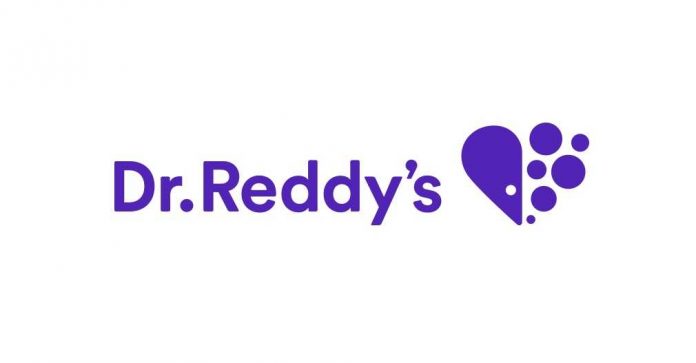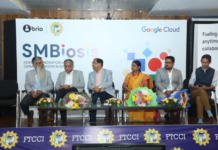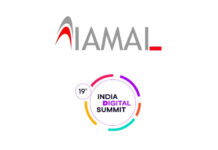It is important to note that digital transformation in pharma is as much about people’s transformation and mindset shift as it is about the usage of technology
For the last few years, digital transformation has been a strategic growth enabler and driver for pharmaceutical companies in various ways.
Mukesh Rathi, Chief Digital and Information Officer (CDIO) at Dr. Reddy’s Laboratories foresee a huge opportunity for digital transformation in two areas – in the primary value chain and in the customer/patient journey. The opportunities and possibilities for transformation that exist across the value chain range from selection of portfolio with analytics-based insights, drug development with in-silico experiments, and automated lights out manufacturing with the use of Industry 4.0 technologies to dynamic supply chain management.
It is primarily in creating a differentiated value proposition in terms of transformation in the customer and patient journey. Dr. Reddy’s foray into digital healthcare aims to bring together four key touch points in the journey of outpatient healthcare and wellness – doctor consultations, pathology laboratories and diagnostic services, pharmacies, and insurance – through various suitable collaborations.
One of the key opportunities that can be leveraged under customer and patient journeys is providing personalised services using digital means. It is important to note that digital transformation in pharma is as much about people’s transformation and mindset shift as it is about the usage of technology. To focus on digital capability building, inspiration from success stories and effective orchestration of change management is important.
“Equally, I think enterprises that adopt disruptive technology will witness immense scaling through increased productivity and value creation in the future. The blurring of boundaries between technology and pharmaceuticals is enabling digital native companies to venture into the pharma digital space. And it is making pharma companies look at digital native solutions to address end-consumer problems and enhance customer experience on the other. Hence, it is important to be open to collaborative models to leverage expertise from other players” says Mukesh Rathi.
Extracting insights from the various interactions
Ranging from healthcare professionals, doctors, and institutional buyers to most importantly, patients and end consumers, the term ‘customer’ in pharma and life sciences could encompass a large audience. Interactions and communication with these entire different stakeholders take place in various forms physical (in-clinic), virtual (telecalls, remote calls), and unsupervised (when customers browse websites or use digital platforms).
To empower customer experience with digital infrastructure, analytics and personalisation models is the key aspect of Mukesh Rathi’s approach. Through varied initiatives such as iPads for their field colleagues, collaboration platforms for remote engagement and digital/web platforms for pull-based engagement, Dr. Reddy’s is building an underlying digital infrastructure.
“We are creating data and analytics engines for insights with strategic aspects of ‘Collect, Connect and Analyze’. We are enabling experience personalization with initiatives such as in-clinic message, remote/omni-channel message, on-platform for all the three formats of physical, virtual and unsupervised interactions. Human-centric design has also started to play an increasingly important role in our digital offerings when it comes to customer and patient journeys as we move from physical to unsupervised interactions with increasing digital innovation,” he explains.
Extracting insights from interactions depends on their ability to identify customer journeys and understand the nuances as well as friction points, and of course full understanding of and compliance with laws and regulations including data privacy.
He adds, “Deeper customer relationships happen when we ‘know’ the customer and ‘personalize’ the engagement. An omni-channel message or a remote conversation with a stakeholder may throw up multiple data points on the content, channel and context. The ultimate outcome of deep insight is to personalize the message for the stakeholders that hits the right note and addresses the un-communicated and unmet need.”
Similarly, every patient goes through a journey throughout the process of disease therapy from consultations to therapy adherence. Technology can help identify evolutions to recommend personalized diet plans; share behavioural nudges, etc. to improve the treatment outcome.
The workloads on cloud-native platform
Dr. Reddy’s Laboratories is extracting critical business value from Information Technology by deploying emerging technologies like Cloud. “We aim to achieve more than 70 per cent workload transformation to Cloud by FY’25 and our comprehensive strategy will help us transform our landscape to cloud-native over the next few years,” he says.
There has been an emphasis on active consideration of Software as a Solution (SaaS) in all new application decisions. Rathi has ensured that SaaS providers are a part of their internal evaluation of each decision around application choices.
“We continue to drive digital innovation through Cloud by ensuring that our strategic choice initiatives are Cloud native. For example, all Data Lakes of the company today are on a single hyperscale provider. This helped immensely with our Data and Analytics journey. Our new platforms are on Cloud. For example, our new digital business SVAAS which is an OPD services platform is Cloud native,” he discusses.
Being on Cloud helps them with access to the latest available technology and availability of add-on services as required. Challenges do exist with Cloud transformation, one of them being security evolution. Cloud technology is still evolving and there are challenges to be solved like latency for critical applications in the manufacturing environment. However, in the long run, it is imperative for organizations globally to make the full journey to Cloud as an end-state.
A digital approach
The key programs initiated at Dr. Reddy’s range across the spectrum of the pharma lifecycle, R&D and manufacturing to the field force. Digital science is one such initiative, which help in giving the impetus to their Research and Development team, using data and analytics across the development cycle. These use cases are aimed at achieving significant reduction in drug development cycle time, improvement of bio study success rate and cost savings to enable First-to-Market products.
Rathi further adds, “The program Digital science has been created with the ambition to achieve top decile productivity in manufacturing operations. We have created our first Digital Lighthouse in one showcase plant and now plan to replicate to the entire network. This program involves the application of multiple data and analytics use cases using Industry 4.0 technologies. Our Smart Rep platform for sales and marketing effectiveness has multiple platforms to improve the productivity of our field colleagues through smart scheduling of calls, improving detailing quality with personalised nudges, reviewing call performance, virtual calls with doctors etc.”
The aim is to bolster their ability to detail medicines to more doctors, personalized messages depending on the interest of the doctor and provide right information on the efficacy and safety of medicines as needed. These platforms also helped in maintaining customer engagement levels during pandemic-imposed lockdowns.
- ‘Digitalize the Core’ – the objective of digital is to simplify and digitalize the processes that would enable the company to scale up without adding complexity. Their journey on paperless plants, Enterprise Resource Planning (ERP) upgrade, tablet-based detailing in the field etc. would fall under their digital initiatives. These programs create the capability to scale up, enabling higher productivity and setting the foundation for transformation.
- ‘Transform with Digital’ – The company is conducting programs across the value chain that leverage digital and analytics use cases to create top-line and bottom-line impact. The primary lever here is to use advanced analytics on top of the Data Lakes created across the organisation.
Achieving visibility and data-driven decisions making
Rathi believes that the future of digital at Dr. Reddy’s will continue to evolve around three areas broadly. The first will be their effort to enable business with digital, to keep them focused on digitalization of all core processes of their value chain to create an operating system that enables scale with efficiency. Their mission is to create platforms that would not just enable work but make it a delightful experience for colleagues.
Building business with digital will be another core area Rathi seeks to become the partner of choice to all stakeholders, including patients, partners and customers, in the entire journey from illness to wellness. This will work on patient services, digital therapeutics as well as new business model platforms such as SVAAS to cater to unmet needs of patients.
Leading business with digital is an area that will keep a dual focus on productivity platforms across the value chain as well as growth/engagement platforms that help deliver differentiated service to customers and healthcare professionals for a seamless user experience. We have seen success with the implementation of digital technology as it provides a competitive advantage for the organization. To drive digital strategy, intelligence platforms enabled by Data Lakes will create visibility and data-driven decisions making.
“We aim to provide a seamless and delightful experience to all stakeholders, internal as well as external; continue to be a strategic partner and growth driver for business,” Rathi concludes.
Also read: CIO News interviews Shri Wangki Lowang, Minister (IT) of Arunachal Pradesh
Do Follow: CIO News LinkedIn Account | CIO News Facebook | CIO News Youtube | CIO News Twitter
About us:
CIO News, a proprietary of Mercadeo, produces award-winning content and resources for IT leaders across any industry through print articles and recorded video interviews on topics in the technology sector such as Digital Transformation, Artificial Intelligence (AI), Machine Learning (ML), Cloud, Robotics, Cyber-security, Data, Analytics, SOC, SASE, among other technology topics






